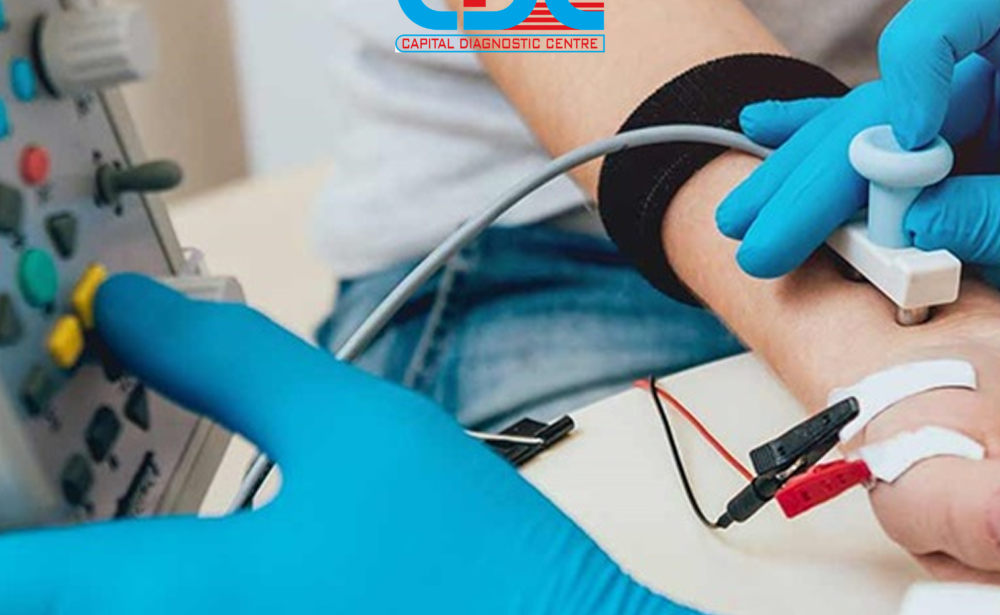Electromyography (EMG) – Muscle & Nerve Function Testing at CDC
Electromyography (EMG) is a diagnostic test that evaluates muscle activity and nerve function.
It helps in detecting neuromuscular disorders, muscle weakness, nerve damage, and conditions like ALS, carpal tunnel syndrome, and neuropathy.
At CDC, we use state-of-the-art EMG machines for precise muscle and nerve analysis. This test is crucial for individuals experiencing numbness, tingling, muscle pain, or unexplained weakness. Our expert neurologists ensure comfortable testing with accurate results to guide your treatment.
Tests Muscle & Nerve Health
Identifies Neuromuscular Conditions
Helps in Evaluating Nerve Injuries
Benefits of EMG Research
EMG is crucial for diagnosing nerve compression, muscle weakness, and neurological diseases. It plays a key role in monitoring nerve recovery after injuries or surgeries. Doctors use EMG results to assess treatment effectiveness for muscular and nerve disorders. Helps detect early signs of neuromuscular diseases before symptoms worsen.
- Detects Nerve Damage & Muscle Disorders
- Evaluates Neuropathy & ALS Symptoms
- Helps in Diagnosing Carpal Tunnel Syndrome
- Performed by Expert Neurologists
Frequently Asked Questions (FAQs)
EMG is used to diagnose nerve injuries, muscle diseases, and movement disorders.
EMG involves mild discomfort but is generally well-tolerated.
The test typically lasts 30 to 90 minutes, depending on the number of muscles examined.
Avoid using lotions on the test day, and wear loose clothing for easy access.
CDC provides advanced EMG testing with expert neurologists and accurate diagnostics.


